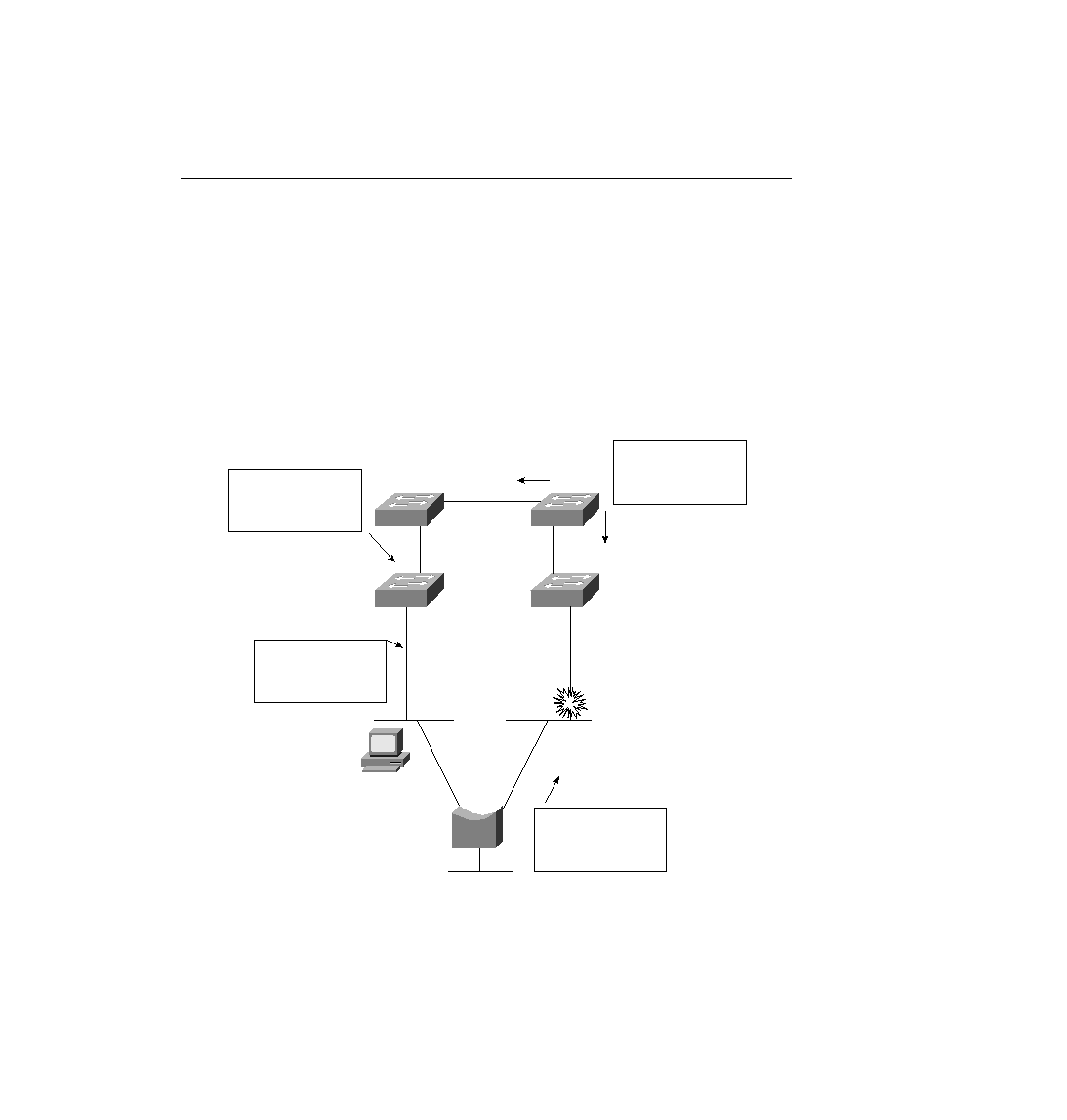
168 Chapter 4: Bridges/Switches and LAN Design
Step 4
My best path (and the only path, in this case) to the root is out my
E0 port; therefore, my root port is now E0.
Step 5
Because no other CBPDUs are entering my E1 port, I must be the
designated bridge on that segment. So, I will start sending
CBPDUs on E1, adding my E0 port cost (10) to the cost of the
CBPDU received in the CBPDU entering E0 (200), for a total cost
of 210.
Step 6
I will no longer send CBPDUs out E0 because it is my root port.
Figure 4-20 illustrates the result of Bridge 4's reaction.
Figure 4-20
CBPDUs After Bridge 4's MaxAge Expires
The logic used by Bridge 4 seems relatively straightforward, albeit detailed. There is a subtle
but important occurrence in this case: Both of Bridge 4's interfaces were forwarding before the
change, and both are still forwarding. In other words, neither interface has changed state. But
E0
E1
E1
E1
Blocking
E0
E0
E0
E0
E1
B1
B2
E1
ID is 0200.2222.2222
Priority 1
Root is 0200.1111.1111
Cost is 100
B5
B3
B4
ID is 0200.3333.3333
Priority 1
Root is 0200.1111.1111
Cost is 200
ID is 0200.4444.4444
Priority 1
Root is 0200.1111.1111
Cost is 210
ID is 0200.1111.1111
Priority 1
Root is 0200.1111.1111
Cost is 0
0200.0000.AAAA
ch04.fm Page 168 Monday, March 20, 2000 5:02 PM
